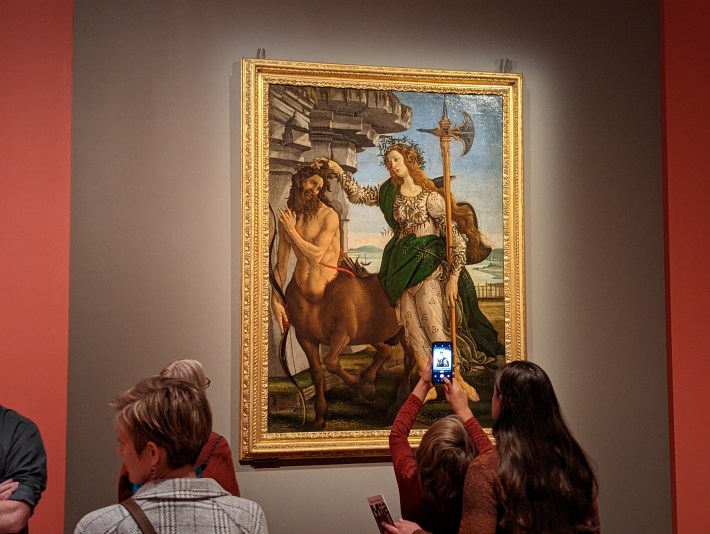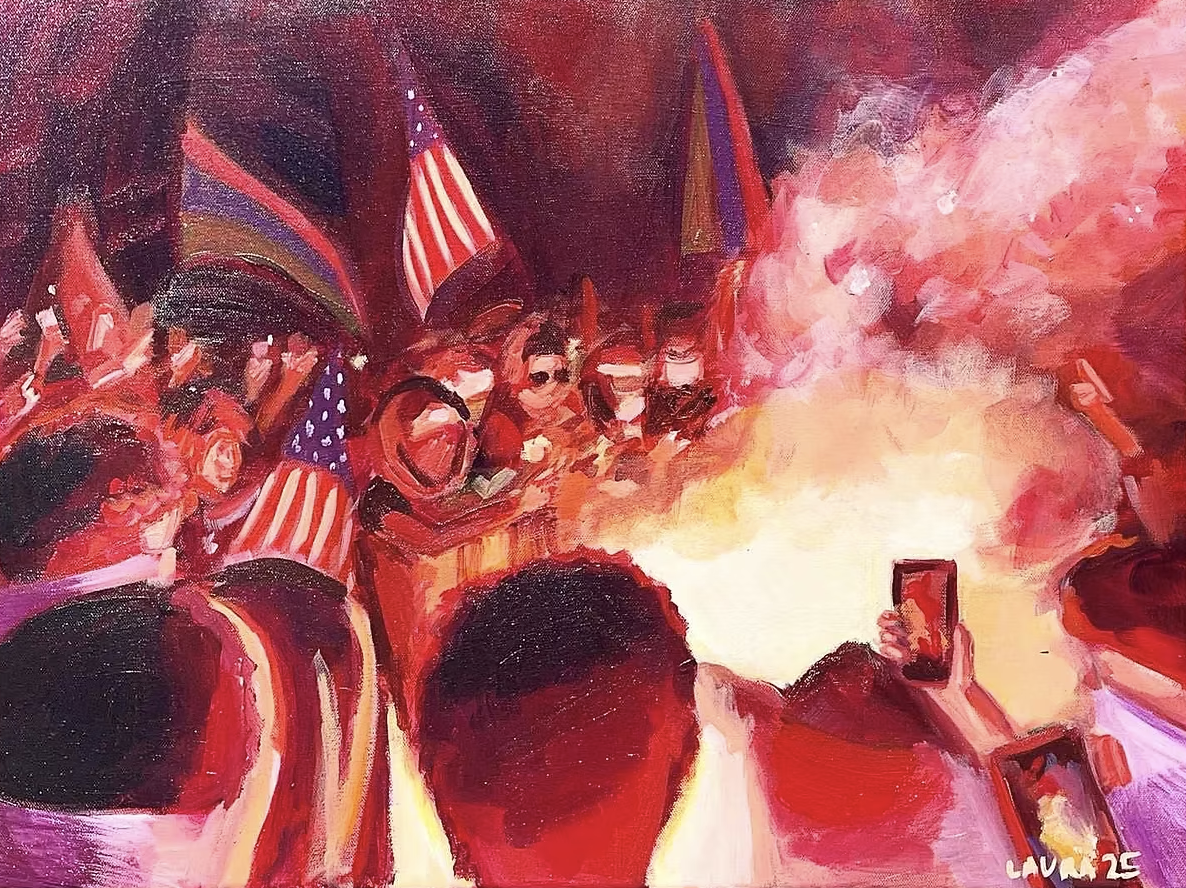Works by Sandro Botticelli, one of the most revered, culturally omnipresent artists in European history, aren't the first thing you see when you enter the Minneapolis Institute of Art’s exhibition "Botticelli and Renaissance Florence: Masterworks from the Uffizi.” He’s relegated to the second room of the show bearing his name.
Instead, the new exhibit opens with a huge print of Franceso and Raffaello Petrini’s View of Florence with the Chain (1470), which maps the city at the time. The piece has been blown up 30 feet wide and 20 feet high, and important locations from the painter’s life have been marked neatly with numbers. Botticelli’s house and workshop are near the center, in an area described as a noisy, working-class neighborhood not far from the Arno River, which bisects the city, swooping from the center westward.
His space added to that noise. “In Botticelli’s workshop,” wrote a contemporary critic, “there was always a proper academy of slackers.”

Botticelli (whose actual name was Alessandro di Mariano di Vanni Filipepi) is among the most culturally pervasive European artists. And yeah, it’s strange to see his work in Minnesota, of all places. Botticelli’s portrayals of ancient myths and Biblical scenes are so recognizable that they’re practically the standard for what many visualize when they think Jesus, Mary, or a Greek god. Given its ubiquity, it’s easy to imagine that The Birth of Venus simply appeared on Earth one day. And yet, at one point in time, Botticelli was... just a guy.
Botticelli’s work is actually the minority of the exhibition. Two of Botticelli’s four most famous paintings bookend the galleries: Pallas and the Centaur dominates the second room, and The Adoration of the Magi towers over the last. Italian law forbids The Birth of Venus and Primavera, Botticelli’s most famous works, from leaving the country—but many of these works rarely leave, leading critics to deem this "the most comprehensive exhibition devoted to Sandro Botticelli ever presented in the US."
It’s Magi that may have brought him fame. “This is truly a most admirable work, and executed so beautifully, whether in coloring, drawing, or composition, that every craftsman at the present day stands in a marvel thereat,” wrote a biographer 50 years after Botticelli’s death. It was Magi, the piece suggests, that caught the attention of Pope Sixtus IV and moved him to invite Botticelli to paint the newly built Sistine Chapel.
At the Mia, the show features a cavalcade of contemporaries, ancient influences, and signposts between Centaur and Magi. “This is the first time his art has been presented side by side with the works that inspired his work,” says Rachel McGarry, co-curator of the exhibition.
For example, visitors to Mia can see The Flagellation, which depicts a haloed Christ with Roman soldiers. Right next to it is Male Torso, a fragment of a sculpture from the Classical Antiquity era believed to be created between 2nd century BCE to 2nd century AD. The piece’s muscular and fluid motion is practically copied and pasted onto Botticelli’s Jesus.

Botticelli wasn’t just inspired by other artists; his career cannot be separated from the politics of Florence at the time. He was patronized by the ruling Medici family for most of his career, and with that patronage he painted luminous New Testament scenes that often flattered them. (The crowd of hushed onlookers in The Adoration of the Magi is stuffed with portraits of Medicis, for example.)
“Art by geniuses is always relevant,” says McGarry. “It’s so incredible that it was even executed by human hands. People understand that he was doing something at an exceptional level. People sense that.”
Many of the eye-popping masterworks depicting the divine are touched with reminders of humanity, time, and everyday life. For example, Madonna and Child with Angels sits in a replacement frame with sooty burn marks, leftovers from candles burning near where it hung in the Florence’s bankers guild, just above Jesus and Mary’s head.

The centerpiece of the show, to me, is tondi, a collection of massive, circular paintings designed to hang in bridal chambers. Botticelli’s Adoration of the Child with Angels is a warm and loving Virgin-and-Christ scene. It has none of the cold, otherworldly holiness that so many Renaissance paintings have, where Christ seems more like a strange alien from another world than a savior, let alone human.
The end of Medici rule precipitated the rise of Girolamo Savonarola, a populist mystic friar. Within the space of a few years he accrued a following, gained political power, caused book- and art-burning mob hysteria, and then was deposed and executed. Botticelli may have even burned much of his own work during that time.
Walking around the exhibition, there doesn’t seem to be anything otherworldly or unreachable about the artist. A loud, working-class slacker? I could be friends with Sandro Botticelli. He was no unearthly creature born to paint God, as close to Christ as the disciples. He was the eighth of nine children, and the son of a tanner. His family was poor, and moved frequently. A 1458 government record lists Sandro as a “sickly” child. Accounts vary, but it seems that once the Medicis were deposed and Savonarola was hanged, Botticelli’s income was modest enough that his family renounced taking an inheritance from him.

This show demonstrates how genius is local. Masters do not just grow up from the soil and ascend to some higher plane. They walk among us in our neighborhoods. Botticelli is here; Botticelli is in Florence. There are Botticellis everywhere on the street.
IF YOU GO:
“Botticelli and Renaissance Florence: Masterworks from the Uffizi”
Now through January 8, 2023
Tickets are $20; available online here.
10 a.m. to 5 p.m. daily, except 10 a.m. to 9 p.m. Thursdays. Closed Mondays.
Also, this Friday, November 25:
Black Friday at Mia
See “Botticelli and Renaissance Florence: Masterworks from the Uffizi” for free, enjoy free coffee and pastries in the lobby, and shop special deals at the museum store. Tickets are first come, first served and available on-site only. The rest of the galleries will open at 10. 8 a.m. to 10 a.m. Minneapolis Institute of Art, 2400 Third Ave. S., Minneapolis.







